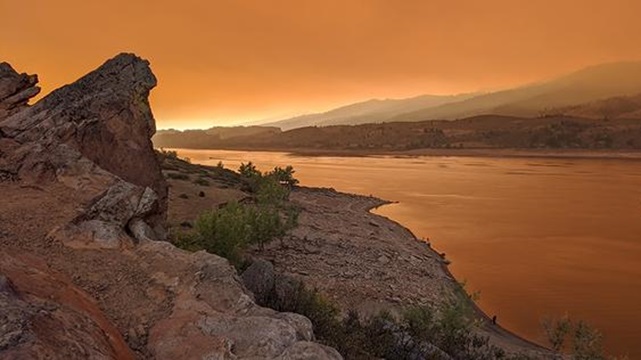As Los Angeles suffers through one of the worst and most destructive wildfire outbreaks in history, a striking revelation was made in new research from Colorado State University that uncovered a surprising twist in the tale of wildfire smoke and its sweeping impact across the United States. While the choking haze from intensifying wildfires blankets vast swaths of the nation, one critical lifeline remains largely unscathed: solar power. Despite the ominous shadows cast by the smoke, the study finds that its influence on long-term solar energy production is minimal, defying expectations in an era where climate disruptions threaten every corner of human progress. This discovery sheds light on the resilience of solar power, even as the skies darken with the growing fury of wildfires.
A groundbreaking paper published in Nature Communications reveals a surprising resilience in photovoltaic solar resources amidst the growing scourge of wildfire smoke. The study shows that losses in average, or background, solar energy production remain modest, even as vast swaths of smoke spread across the U.S. Only regions immediately surrounding active fires, where smoke plumes are heaviest, experience significant disruptions.
Even in the face of extreme fire seasons, the research highlights a remarkable stability in solar power generation nationwide, underscoring the reliability of photovoltaics as a critical energy source in a world increasingly shaped by climate-induced wildfires.
For the project, the CSU-led research team used both modeled and historic data from multiple seasons to better understand changes in baseline solar resource availability related to wildfire smoke.
CSU Postdoctoral Fellow Kimberley Corwin is the first author on the paper. She said that as the U.S. looks to increase the amount of solar it uses from 3% to 45% of its total energy portfolio, these findings could be used to make informed decisions around where to build collection sites.
“There has been similar research into specific events – particularly around the larger fires in California. Our work, however, goes further and quantifies the effects over large timescales and geographies,” she said. “We show there are significant impacts to solar power resources near these fires, but that when smoke is transported farther away, as we have seen in the Midwest and along the East Coast recently, it presents much less of a concern in terms of prolonged solar losses. That has implications for where upcoming facilities should be placed for long-term efficiency as well as stability with the grid.”
Solar power generation can be hindered by a variety of factors beyond smoke, such as cloud cover and air pollution. The research team was interested in specifically understanding wildfire smoke’s impact on irradiance – the amount of solar light making its way to the surface of a panel to be collected. They specifically focused on Global Horizontal Irradiance (GHI) which includes both direct sunlight and diffuse sunlight scattered by the atmosphere. GHI is most relevant for the flat-plate photovoltaic systems that account for most of the solar production in the U.S.
In 2020, smoke from wildfires burning in California, Colorado and Oregon eventually arrived on the East Coast. Corwin said those plumes can still result in large losses over short time scales, however longer-term impacts remain modest since the smoke is not as persistent.
“While you do see large reductions close to active fires, that drops off quickly with distance. Substantial losses are specific to the area directly around the fire where the smoke column is denser and therefore blocks more of the light,” she said. “Meanwhile, the impact of the large, transported plumes that can linger for days but are dilute, is relatively modest compared to the average solar resource change you may see under other conditions. The decreases from transported smoke are only about 5% and – in some places – even less than 2% versus the average in low smoke years.”




